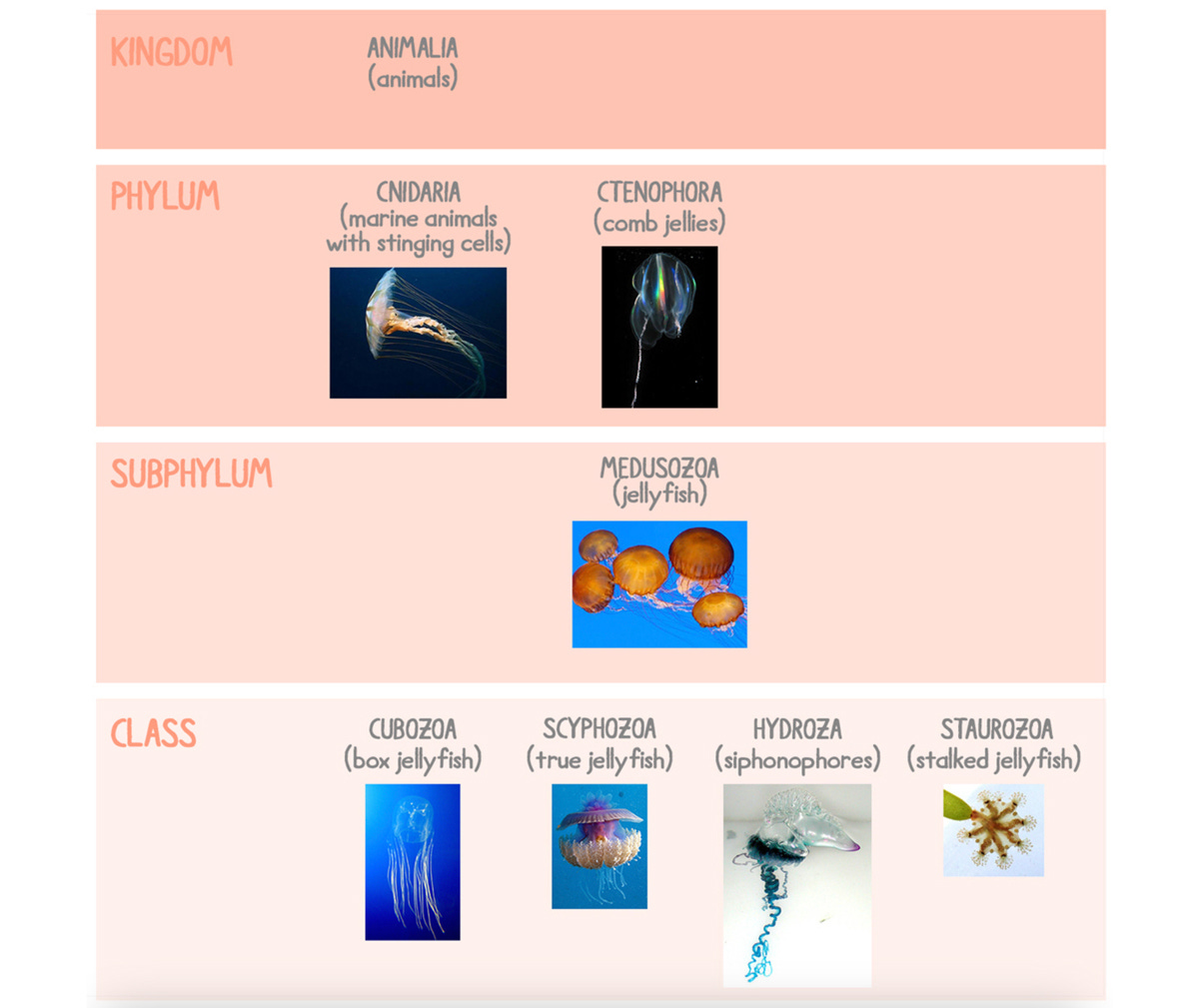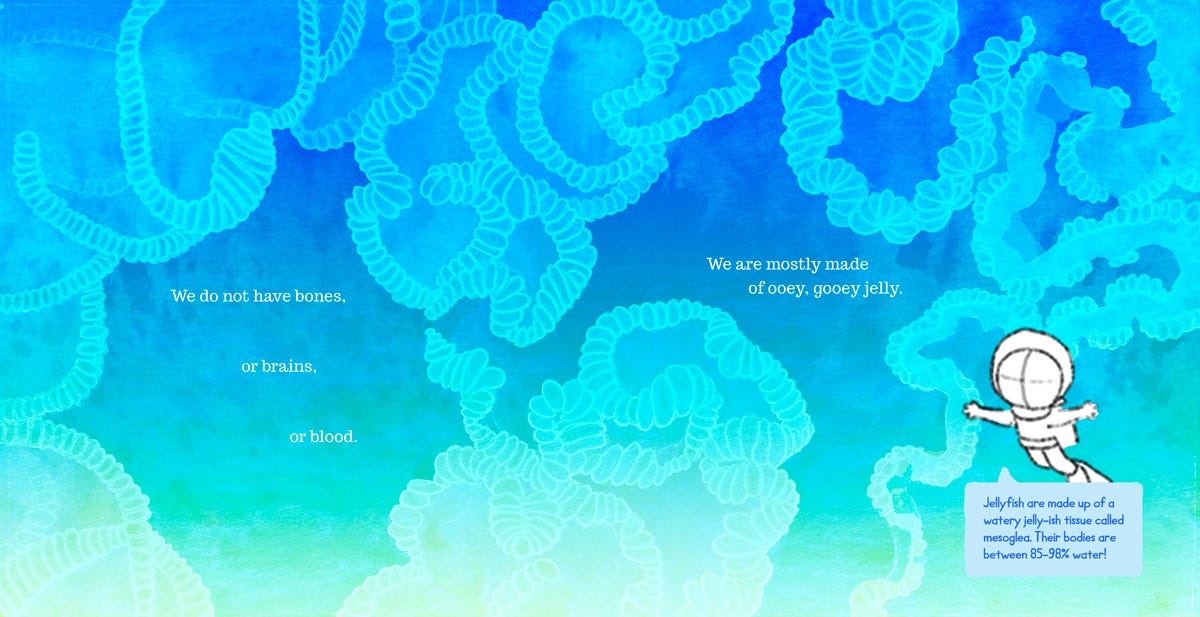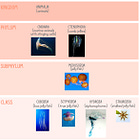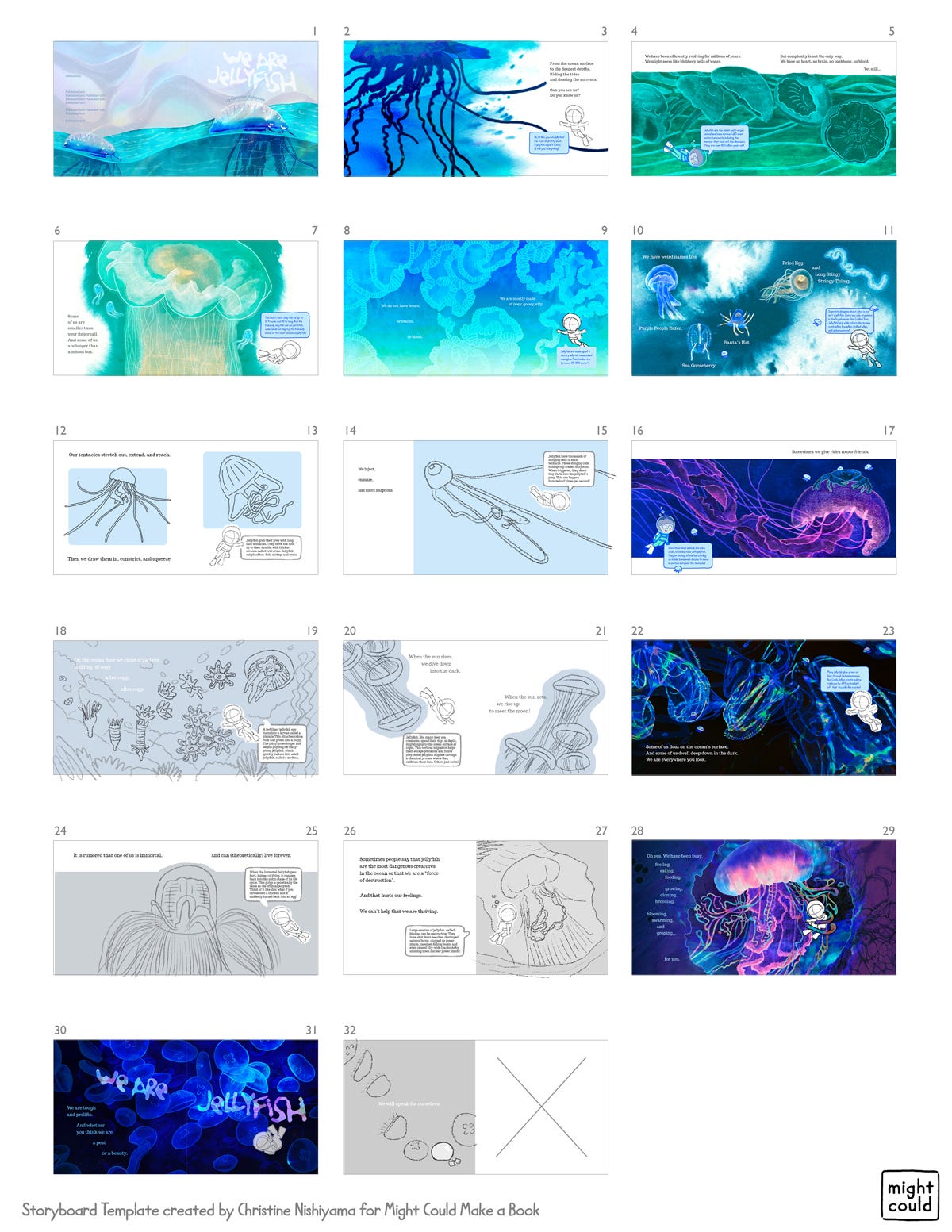36. Bright, Luminous Tentacle-Things! (Final Art Spread 8-9)
We Are Jellyfish: Picture Book Process
This is the 36th (😵💫) update on my book-making process for my next book, We Are Jellyfish—a picture book about those weird, blubbery creatures of the deep.
Hi, there! I’m back!
Thanks for your patience as I took a few weeks off to recalibrate and attempt to help after Hurricane Helene tore through our community. I was able to get back to work on We Are Jellyfish last week and now have a new final art spread to share with you!
These bright, squiggly tentacles are inspired by the Portuguese Man o' War, which I know is most often classified as a siphonophore and not a jellyfish, but which I decided long, long ago to include in my book on jellyfish.
As I said way back in the second update on the process of making this book, the word jellyfish is not exactly a scientific term and many, many scientists disagree on what should and shouldn’t be classified as a jellyfish. As new species are discovered and more is learned about the species already found, scientists have had to rethink and reorganize the way they are categorized.

And so, for me to make a book about the elusive jellyfish, I had to decide where I would draw the line on what is and isn’t a jellyfish. And you know what? I’m bein’ inclusive, y’all. My book covers the entire Medusozoa subphylum—which includes the classes of Scyphozoa (true jellyfish), Cubozoa (box jellyfish), Staurozoa (stalked jellyfish), and Hydrozoa (siphonophores)—and I also added in comb jellies, which are in a whole different phylum called Ctenophora!
So, if you’re someone who fervently believes only “true jellyfish” are jellyfish and are gonna be all mad about it when this book comes out… sorry! But siphonophores and comb jellies are just too beautiful and fascinating to leave out. You can read more about my decision on what to include in that second post here:
Anyways… here’s the updated storyboard with this new spread!
It took me a whole week to draw and paint this spread and then another two days to fiddle with the digital editing and find the right balance of colors. It was a lot of back and forth, trial and error, this is wonderful! and this is terrible! You know, the creative process in a nutshell.
If you’re a paid subscriber, read on below to see the whole process of this spread from sketch to painting to final artwork!
The Process of Making Spread 8-9
Keep reading with a 7-day free trial
Subscribe to I Might Could Do That! to keep reading this post and get 7 days of free access to the full post archives.







